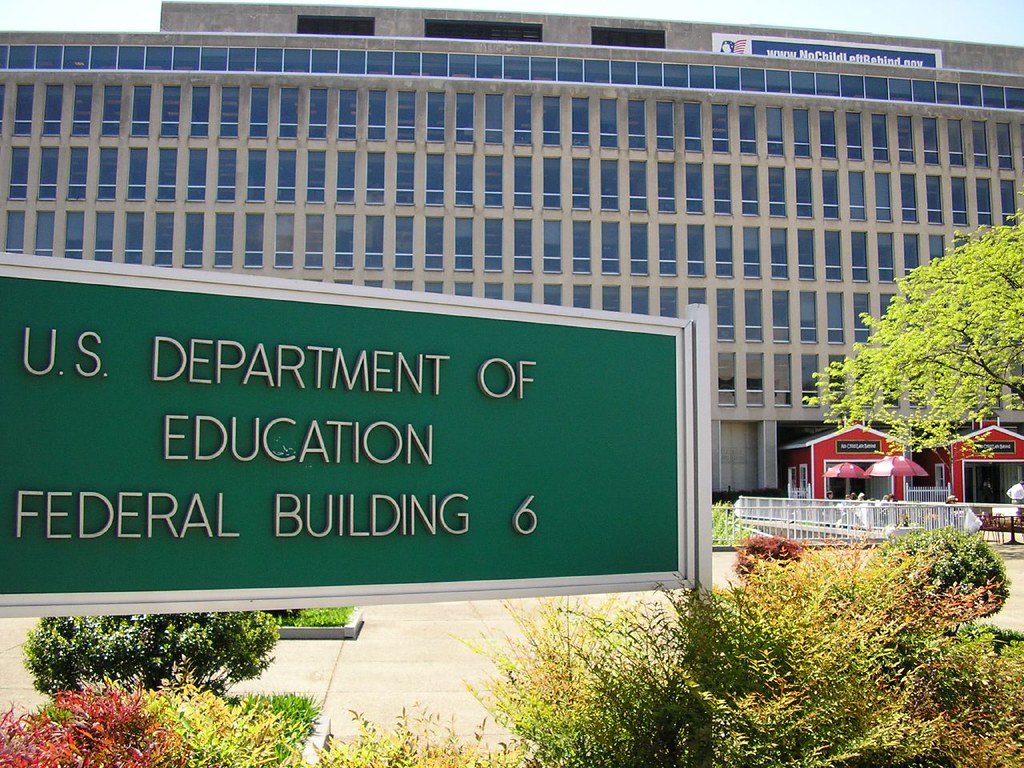In light of the uncertainty surrounding the Trump administration’s attempts to dismantle the federal Department of Education (DOE) one thing is clear: Those concerned about non-public school students should advocate for their views with legislators.
“There are more questions than answers right now,” said Orthodox Union Executive Director of Public Policy Nathan Diament. “We have to engage for the best outcome.”
Diament spoke during a virtual program, “What Does the Closure of the Department of Education Mean for You and Your School?” on March 26, sponsored by the Teach Coalition and the OU’s Advocacy Center.
It was moderated by Dan Mitzner, director of government affairs for the Teach Coalition, which advocates on behalf of yeshivas and Jewish day schools for equitable government funding and resources in seven states—New York, New Jersey, Florida, Pennsylvania, Maryland, California and Nevada.
Mitzner said the uncertainty in Washington presents an opportunity to voice concerns about such issues, such as school choice and antisemitism, to not only national leaders but also to those at the state level who may be given authority over certain funding and guidelines. “It’s an incredibly exciting time,” he said, adding that the OU is planning an “advocacy blitz” over the next few months.
Both Diament and Mitzner urged participation in the annual OU mission to Washington May 6-7, with Mitzner noting, “We say every year is the most important year, but this year really is the most important year.”
The atmosphere of uncertainty is even more complicated because since Congress created the DOE, only it alone has the authority to eliminate it, noted Diament. However, what President Donald Trump can do is downsize its staff considerably, which has already happened.
The DOE handles a number of functions, all of which will have to be farmed out to other agencies. Its Office of Civil Rights oversees enforcement of civil rights law and nondiscrimination policies for the more than 49 million students in pre-K-12 schools and the more than 19 million students in colleges and universities. It also distributes money to states and school districts, including Title I grants for low-income schools, as well as special education funding through the Individuals With Disabilities Education Act (IDEA). It oversees federal loans and grants—such as Pell grants—to help students afford college and gathers nationwide education data, informing policy decisions and identifying achievement gaps. New Jersey, Massachusetts and Connecticut receive the least per pupil of the billions DOE distributes.
Already Trump said he wants the Small Business Administration to handle student loans, said Diament. The president has said that he wants the Department of Health and Human Services to take over the IDEA program.
The decentralization could result in the government using a block grant methodology for disseminating funding for the IDEA program and letting the states decide how to use it, he added. However, there may be states that are unfriendly to non-public school students.
Yet Diamant pointed out that legislators know who voted for them and don’t want to alienate them, leading to Congress possibly putting some stipulations on that state money. “So you might say give New York $20 million for special education and give New York a lot of freedom but also say if 10% of your students are in non-public schools you must use 10% for services for non-public school kids,” he explained. “But there’s going to be a lot of discussion over the next weeks over these types of guardrails.”
Diament said there also is the possibility that a different kind of voucher system may come into play, where the money follows the individual student, whether that aid is for bus services or special education, or other locally based distribution of funding for special education services.
The uncertainty regarding the functions handled by the DOE also comes at a time when the proposed Educational Choice for Children Act, which would allow 85%-90% of students nationwide to benefit from school choice via scholarships and provide $10 billion annually to fund private and religious K-12 schools, has been introduced.
“President Trump likes to say he likes giving back control to the states and parents keeping in mind most of the school choices are already in the hands of local boards and states,” said Diament, adding that the matter is not a red-state versus blue-state issue. For example, Florida has “robust” school choice while in New York hundreds of millions of dollars flows to Jewish schools.
However, even as the current political climate presents opportunities for expanded school choice Diament warned it could also be a “double-edged sword,” using his own state of Maryland, where there is little support for the non-public school community, as an example. While it may force change there, states that already have school choice may decide money appropriated for that purpose can be earmarked for something else since federal funds are now available. Then down the road, funding for school choice goes flat or a new administration with other ideas comes in four years from now and federal funds are slashed. However, a problem could arise because the state has already earmarked the school choice money to fund another program.
“Things change in Washington and the money changes,” said Diament. “The point is, we have to be very vigilant and careful. There could be pitfalls in places we did not expect.”
Debra Rubin has had a long career in journalism writing for secular weekly and daily newspapers and Jewish publications. She most recently served as Middlesex/Monmouth bureau chief for the New Jersey Jewish News. She also worked with the media at several nonprofits, including serving as assistant public relations director of HIAS and assistant director of media relations at Yeshiva University.











